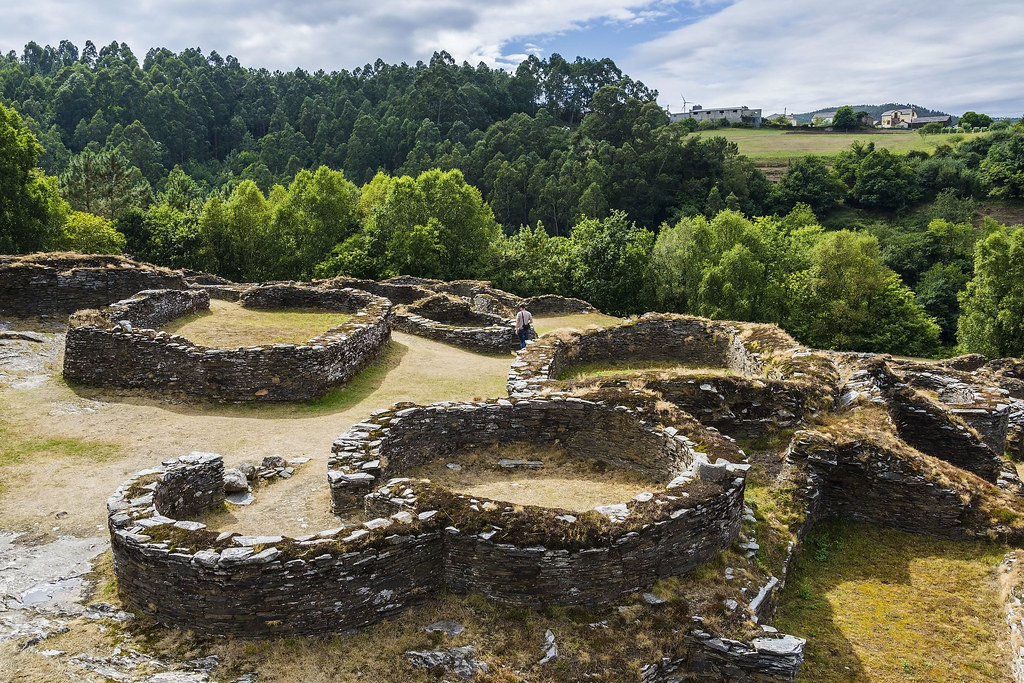Historical Gems of Costa Verde
Costa Verde, located in northern Spain, is a region steeped in history that offers a unique perspective on the country's rich past for history enthusiasts. This lush and verdant coastal stretch, encompassing Asturias, Cantabria, and part of the Basque Country, is known for its captivating historical sites and cultural heritage.

Oviedo Cathedral
The Cathedral of San Salvador of Oviedo today displays an array of architectural styles, from Pre-Romanesque to Baroque, including Romanesque, Gothic and Renaissance parts.
Read more about Oviedo Cathedral
Guggenheim Museum Bilbao
The Guggenheim Museum Bilbao is a museum of modern and contemporary art designed by Canadian-American architect Frank Gehry. The museum was inaugurated in 1997 by King Juan Carlos I of Spain, with an exhibition of 250 contemporary works of art. Built alongside the Nervion River, which runs through the city of Bilbao to the Cantabrian Sea, it is one of several museums belonging to the Solomon R.
Read more about Guggenheim Museum Bilbao
Roman Baths of Campo Valdes
These thermae (Roman baths) of Gijón are considered one of the most important sites in northern Spain. Campo Valdés are a site museum on baths dating from the Early Empire. They are located in front of the Church of San Pedro under Campo Valdés Gardens, at sea level.
Read more about Roman Baths of Campo Valdes
Tower of Hercules
The Tower of Hercules (Torre de Hércules) is an ancient Roman lighthouse on a peninsula about 2.4 km from the centre of A Coruña. The structure is 55 metres (180 ft) tall and overlooks the North Atlantic coast of Spain. It has been a UNESCO World Heritage Site since 2009.
Read more about Tower of Hercules
Santillana del Mar Collegiate Church
Santillana del Mar Collegiate Church has its origins in a monastery dating from 870. Tradition has it that it was home to the relics of Santa Juliana. Over the course of the 11th century it was transformed into a collegiate church, although the building visible today dates from the 12th century.
Read more about Santillana del Mar Collegiate Church
Santander Cathedral
Read more about Santander Cathedral
Santa Ana Castle
Santa Ana Castle was built in the 13th century but abandoned already in the 16th century. The five 15m high corner towers protect the main building where the lighthouse was erected in 1853.
Read more about Santa Ana Castle
San Vicente de la Barquera Castle
The castle of San Vicente de la Barquera was a royal residence built by Alfonso I of Asturias in the 8th century. The current walls and structure date from the 13th century. The complex is 50 meters long and around 20 m wide.
Read more about San Vicente de la Barquera Castle
Castro de Coaña
Situated on the left bank of the Navia Estuary, Castro de Coaña is a hilltop settlement (4th Century BC) surrounded by walls and accessed from the south. The main defensive structure is located precisely in the south and consists of a wide ditch dug into the slaty subsoil finished off by a wall.
Read more about Castro de Coaña
Cave of Altamira
The Cave of Altamira is located near the historic town of Santillana del Mar. It is renowned for prehistoric parietal cave art featuring charcoal drawings and polychrome paintings of contemporary local fauna and human hands.
Read more about Cave of Altamira